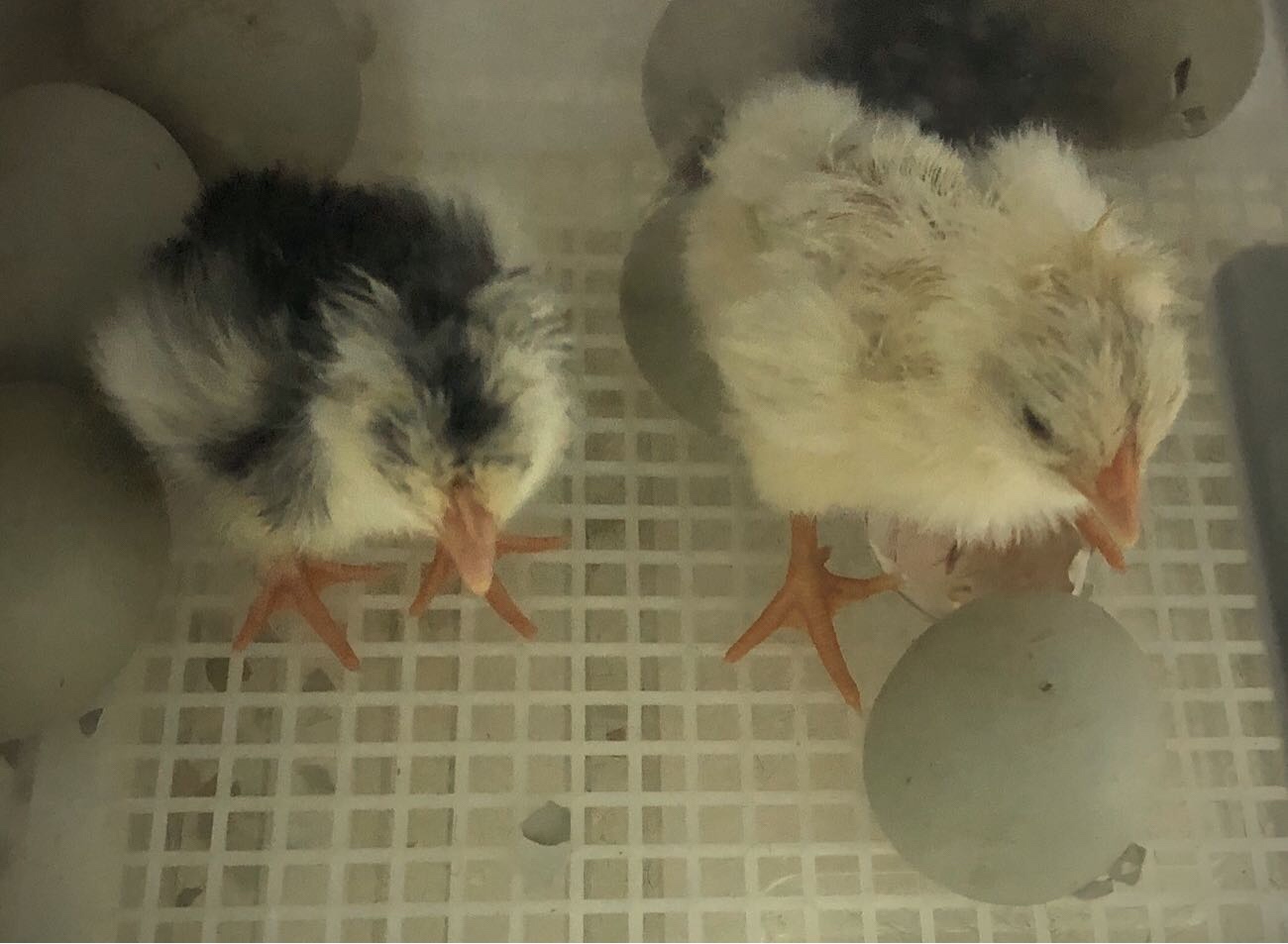
It’s not long after I went to bed and for some reason, I awoke with my mind active and the desire to write a bit. While I don’t like being up at this time of the night (morning?), I figured I may as well make the most of it. After all, a hatch is underway and it’s been a few hours since I last checked progress.
Since I was up, I made myself a nice cup of herbal tea and took the opportunity to check on the hatcher. A group of Swedish Isbar eggs is hatching right now, and (of course) the hatcher’s temperature fluctuated right before I retired for the evening. Because it takes a while – really, it can be a couple of hours – for temperature to stabilize in the unit, I went to bed without feeling assured that the temperature was where I wanted it to be…and I suspect that may have contributed to the interrupted sleep.
When I checked the hatcher, the temperature was within what I consider “normal parameters” – that is, slightly lower than it would be prior to lockdown and hatch. Lower temperatures are generally less concerning to me than temperatures running a bit high – if temperatures are slightly too low, the hatch may just be delayed, but if they’re running too high, it could be dangerous (or even fatal) to the unhatched eggs and chicks. The thought of a group of chicks dying after making it this far is a terrible one.
Let me be clear, though: to date, the hatcher’s temperature has never fluctuated so wildly that chicks or eggs have been harmed. The fluctuations that have occurred are usually due to hatched chicks touching the independent thermometer/hygrometer (a must for incubation) or changes in the ambient temperature of the room the hatcher is in.
Temperature changes in the room where the hatcher is located are the most common and problematic, and it’s usually worst in the colder parts of the year. If the room gets too cold, the hatcher has difficulty compensating and maintaining the optimal temperature – which can be remedied by ensuring that the central heat is sufficient to keep the room warm. In this group’s case, however, I think that the apparent temperature fluctuation was caused by the hatched chicks coming into close proximity or even contact with the thermometer/hygrometer’s probe, which is suspended at egg height through a vent hole in the top of the hatcher.
At last check, already-hatched chicks were running around in the hatcher and others were still working on escaping their shells. Humidity was good (another concern that can keep me up at night) and the hatcher’s room was warm. All good. Now, with my mind at ease about the state of this hatch, I should be able to slip back into the arms of sleep soon and let the vitally important processes that occur during deep, restorative sleep occur. Some soothing tea and a little writing can work wonders! And, when I awaken at a (hopefully) more appropriate hour of the morning, more chicks may have hatched.
Learn more about why getting enough quality sleep is important.
